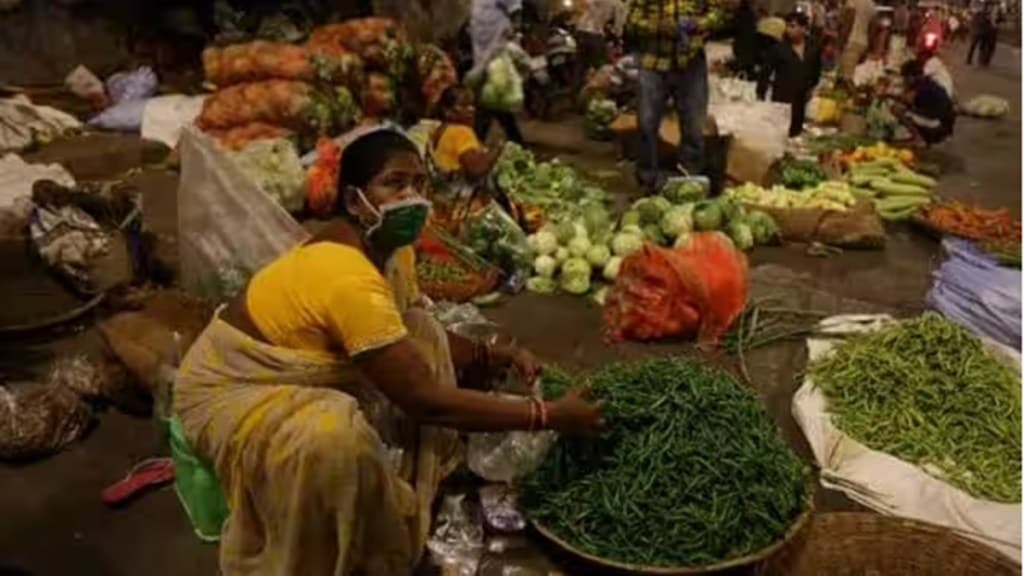By Ashok Gulati and Manish Kumar Prasad
The June Consumer Price Index (CPI) inflation print, at 4.8%, would be causing discomfort to the Reserve Bank of India (RBI) as well as the government. Further, the erratic monsoon has raised the upside risk of inflation. The government has imposed a ban on exports of white rice with a hope to tame cereal inflation. But can this tame such inflation? Our research says ‘no’. For proof, look at wheat. India imposed ban on wheat exports in May 2022, and, in June 2023, further tightened the grip on markets by imposing stocking limits on traders and processors. And yet, inflation in wheat hovers in double digits. The reason? Policymakers are using instruments of the 1960s. Such bans on exports and strangulation of domestic markets will not be appreciated by G20 countries. The rice export ban will hurt the African countries most as rice prices are likely to go up internationally. India is the largest exporter of rice, accounting for almost 40% of the global rice trade.
Domestically, it reflects a knee-jerk reaction and a strong pro-consumer bias, which, incidentally, turns out to be anti-farmer. Such export bans on rice and wheat, and stocking limits on wheat, also make a mockery of the agri-marketing reforms that the farm laws, now withdrawn, were trying to achieve. There is no doubt that cereals and products inflation is high and stands at double-digits (12.71%), contributing about 22.8% to CPI inflation as it has a high weight of 9.7% in the food group of the CPI basket. The inflation rate for wheat stands at 12.37% despite the ban on exports and imposition of stocking limits on traders and processors recently. Furthermore, rice inflation stands at 11.78%, and there has been lukewarm response to FCI’s open market operations. Rice and wheat being the largest crops—and with the government already giving free rice or wheat (5kg/person/month) to more than 800 million people under its PM Garib Kalyan Anna Yojana—one wonders why the Centre has been taking extreme steps such as banning exports or setting stocking limits. These measures reflect panic and lack of understanding how to tame inflation in a market economy. It is especially puzzling for rice, as the government has stocks of more than 40 million tonnes (mt)—almost three times the buffer stock norms of 13.5 mt as on July 1.
What could be a better solution for taming wheat and rice (non-PDS) inflation? Reduce the import duty on wheat from 40% to, say, 10%, and unload excess rice stocks in the open market at lower prices than what the Food Corporation of India (FCI) has been doing recently. There is also a need to revise the weight of food and beverages in the CPI basket, which is outdated and based on the 2011 consumption survey. This weight currently is 45.9%, and food’s alone is 39%. Engel’s law clearly shows us that with rising per capita income, people will spend less on food. Our research suggests that the weight of food and beverages will be around 38% in CPI basket in 2023, and that of food alone will be about 33%. With the old weights, we are over-estimating CPI inflation, which needs urgent correction.
There is another noteworthy item in the June inflation. The tomato prices that are bothering an average household currently, show a negative inflation of 34.7% in June 2023. It is because last year, in June 2022, the inflation of tomatoes was 158%, and, therefore, when one compares year-on-year (y-o-y) inflation, it turns out to be negative for tomatoes. But, on a month-on-month (m-o-m) basis, June-over-May 2023 inflation is 64.5% for tomatoes. July may be even higher before it cools down in August-September when fresh arrivals start coming from Maharashtra. Right now, tomatoes humble the RBI, yet again. But one must seek accountability from Operation Green, which was conceptualised to stabilise value chains and prices of tomatoes, onions, and potatoes (TOP). Our research shows that even as tomato prices will likely cool off in August-September, onion prices could rise. There is no short term solution, but in the medium term, at least 10-15% of these need to be processed to stabilise their prices.
However, there is another important food item whose inflation needs to be checked, and that is milk & milk products, which recorded an inflation rate of 8.56% in June 2023 and contributed 11.2% to overall CPI inflation. Interestingly, among the 299 commodities in the CPI basket, liquid milk has the highest contribution of 11% to CPI inflation. Rising feed costs and lumpy skin disease have led to near-stagnant milk production (222 mt) in FY23 over (221 mt) in FY22. The policy solution again lies in reducing import duties on skimmed milk powder (SMP) from 60% to 10% and on butter from 40% to 10%.
Pulses and products inflation in June 2023 is also at double digits (10.53%). And within this group, tur has to be watched. It experienced a significant inflation rate (27.50% )due to lower acreage and production compared to the previous year. Regions dependent on rainfall for pulses cultivation, such as Madhya Pradesh, Rajasthan, and Maharashtra, may see reduced output due to anticipated adverse weather conditions caused by El Nino.
Importing as much tur as possible from Mozambique, Malawi, Myanmar in time can help tame prices. Also, India needs to abolish the minimum import price for yellow pea, which currently stands at Rs 200/kg. Yellow pea is the cheapest pulse and can act as an anchor on overall spurt in pulses prices.
To sum up, India can contain CPI inflation within 6%, provided it uses import policy for food products liberally and well in time. Else, don’t be surprised if it breaches the 6% barrier of the RBI’s comfort band in September-October-November.
Writers are respectively, distinguished professor, and research associate, Icrier
Views are personal

